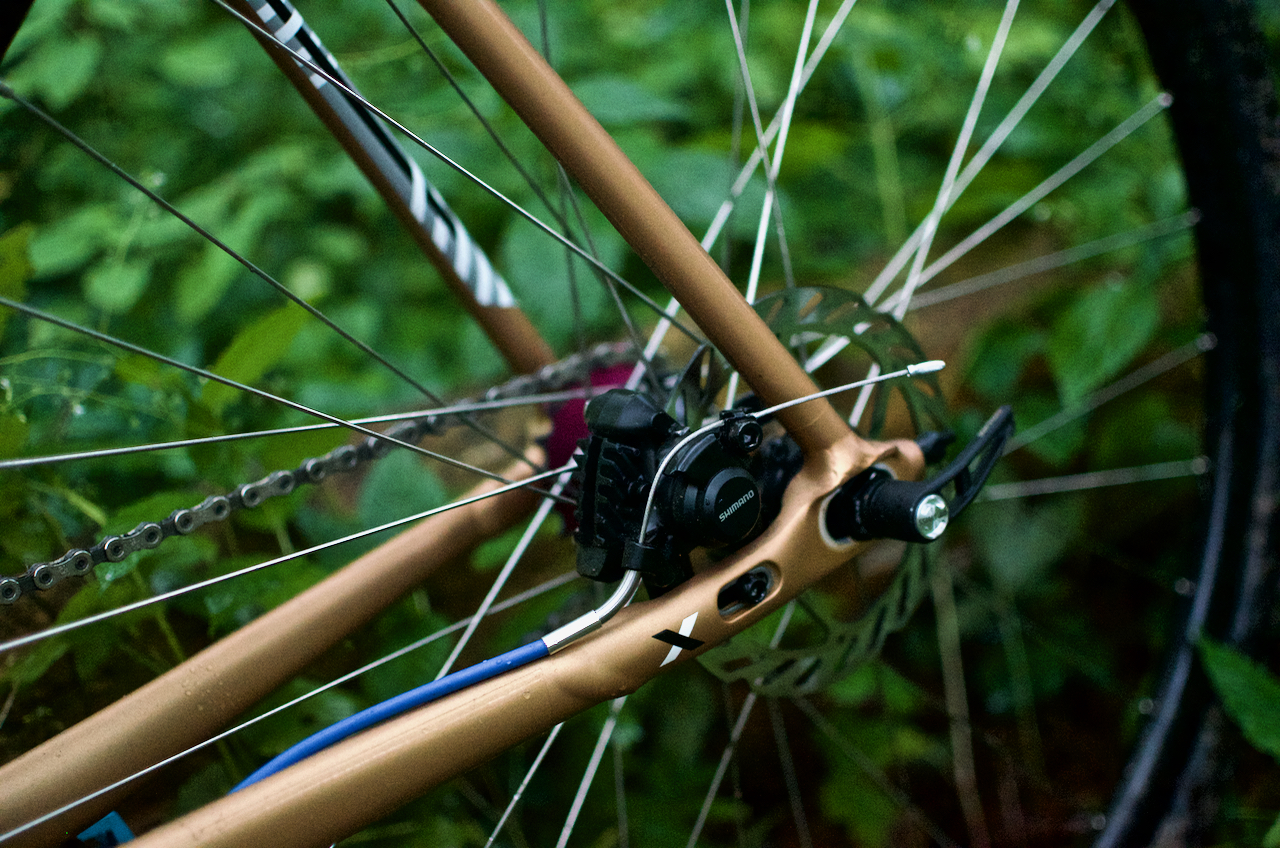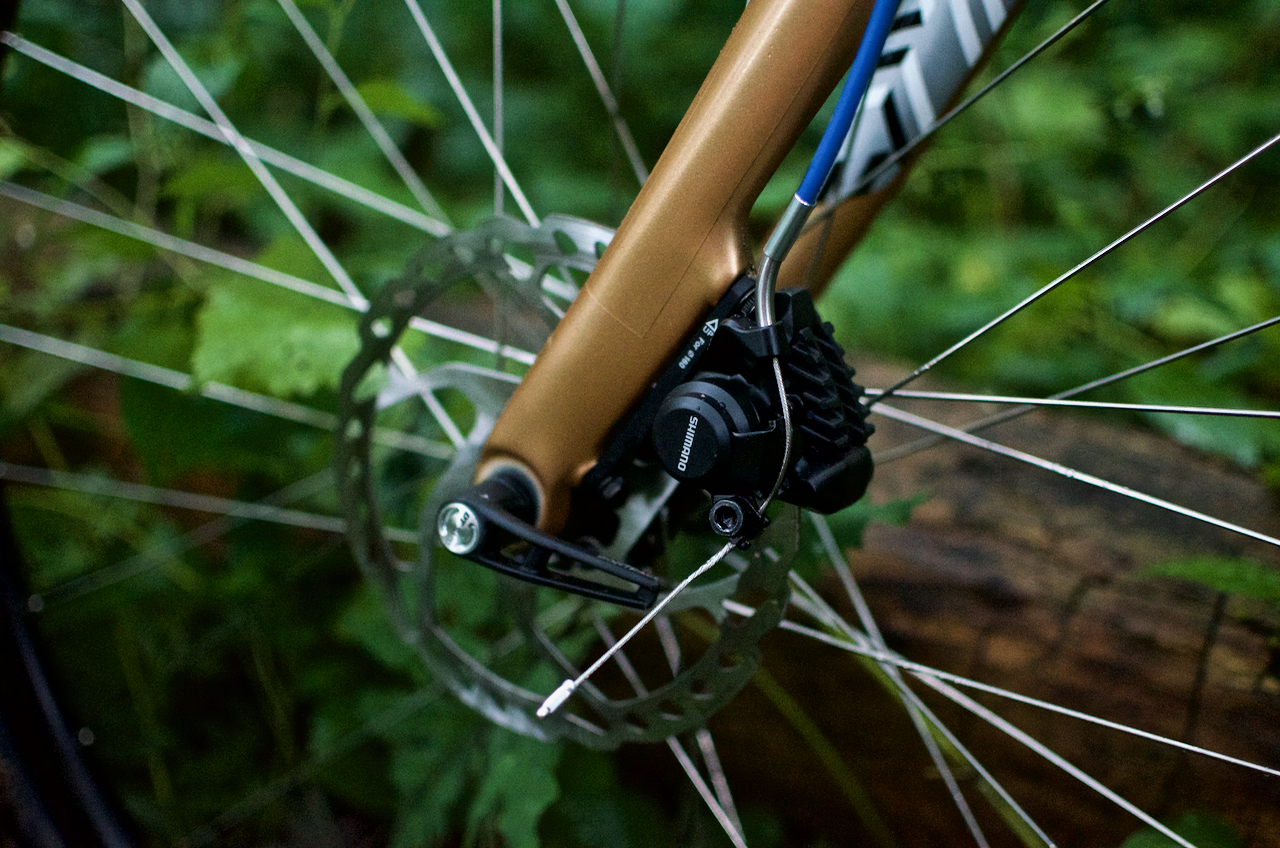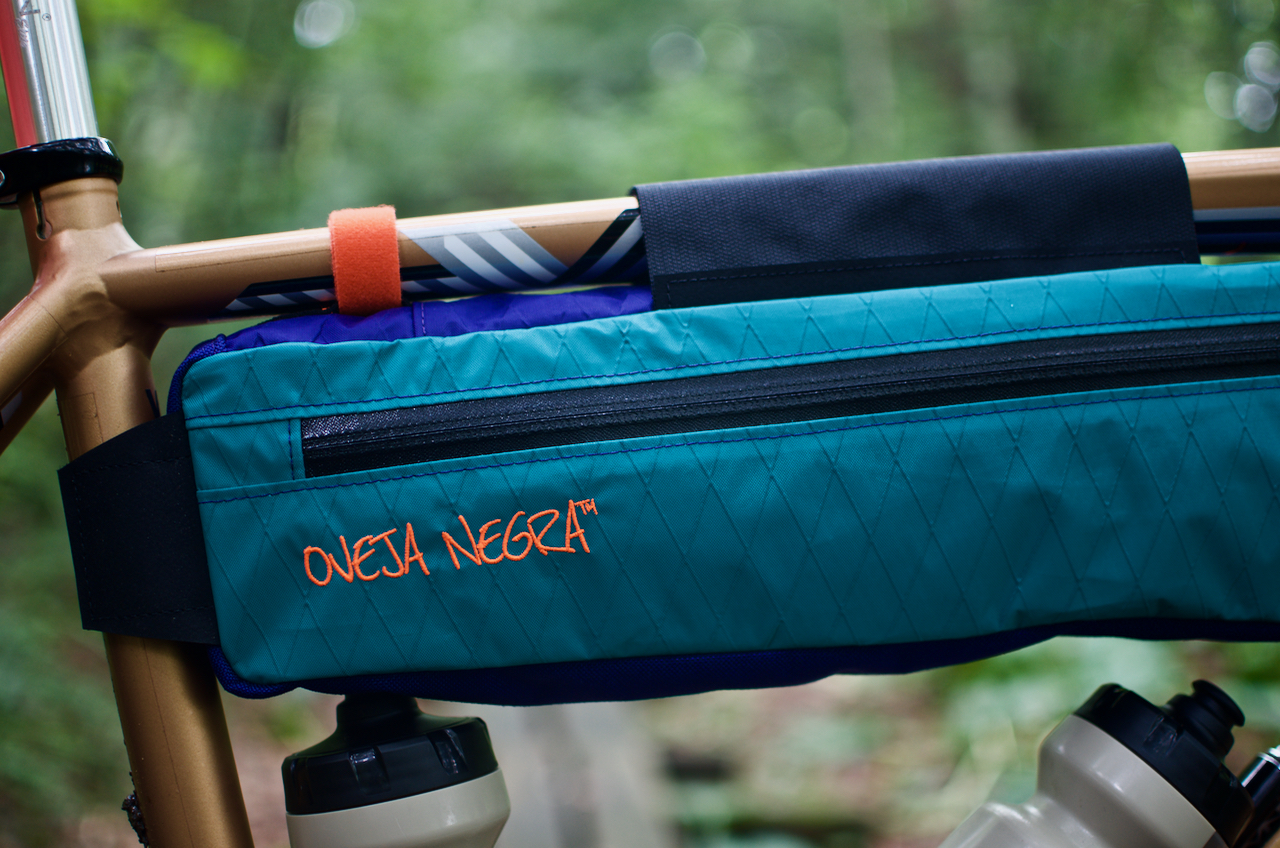Weight weenies are spinning in their graves…
I once asked local cycling hero High Mileage Steve how he liked his new custom frame, he said “I think it’s pretty good, but I’m not sure yet. I haven’t ridden it enough.” Steve had over 10,000 miles on it, which takes him just a little over four months.
Steve is smarter than I am. With new bikes, it’s easy to get caught up in the glitz and glam, but you can’t really tell how a frame fits until you’ve ridden it a bunch. In my First Look of my All-City Nature Boy 853, I was positively crooning, but the cold, hard reality set in after a few months — the top tube was just too long.
It’s not the frame’s fault, but it kept me and that bike at arm’s reach (pun intended). I just couldn’t fall in love with it. Much sooner than I would have liked, I was back on the market for a new frame.
My qualifications were pretty simple; I wanted to re-use as many components as I could, and I wanted steel, and I wanted to run it singlespeed. That last part kept tripping me up. Every close contender had the wrong dropouts, and it was killing me.
Noah, a mechanic at Laughing Dog, talked me into an aluminum Trek. He loved his Crockett and — lucky me — the 2018 frame came with sliding rear dropouts. Sold.
A lot of my old components swapped right over, but not all of them. This frame uses a lot of updated standards and technology. It’s on the bleeding edge of bike tech, a place I swore I’d never go… at least I have my Pugsley to keep my head out of the clouds.
The 2018 Trek Crockett has the following:
- 12mm Thru-axle dropouts, front and rear
- BB86.5 Bottom Bracket shell
- Flat-mount disc brakes
- Internal cable routing
- Stranglehold dropouts
Each one of these fancy features was a pain in my rear, but I persevered, and it was worth it.
Thru-Axles
My only relation to thru-axle was the plethora of quick-release wheels on Ebay as the old standard started its death-spiral. It’s easy to find old QR mountain bike wheels with super-narrow rims if you’re building up a cross-check or something.
At any rate, having tried it out, I’m sold. It’s very easy to drop out the rear wheel for a flat tire, and it’s great knowing that everything’s 100% straight when you mount it in (no more brake rub!). And speaking of brakes, there’s virtually no disc rub when you hammer on the pedals. That wheel stays locked and you can run the pads as close to the rotor as you please. It’s quite beautiful…
I did have to have a new front wheel built around a thru-axle hub. I now have Hope in the front and rear, and that’s great, because the hubs are easily convertible between standards. I knocked out the old axle with a plastic hammer and the edge of my workbench, with reckless abandon, and slammed in the new one using a lockring tool. Don’t try this at home.
Press-Fit Bottom Brackets
Screw press-fit. There, I said it! The press-fit was almost a dealbreaker. I don’t care how stiff the power transfer is, give me good old-fashioned english-threaded every time.
But, beggars can’t be choosers, so I used a Wheels Mfg. converter bottom bracket, which screws into the shell and lets me reuse my old boat anchor, the Sram Rival crank.
Flat-Mount Disc Brakes
I don’t know what flat-mount is for. I really don’t. Aesthetics? Slightly stiffer brake transfer? I don’t know. All I know is, I had to buy new brakes.
My Paul Klampers eased my pain by having excellent resale value, and Shimano put on the final band-aid with their new and very reasonably priced flat-mount mechanicals. Like all Shimano tech, these brakes come with a very sexy name, the BR-RS350. The stopping power of these brakes mated to my SRAM levers actually feels a little more powerful than the Klampers. I know, I hate to say it.
Maybe there is something to all the trickle-down tech on these, which practically scream “Hydraulics.” They’re not. They’re cable-actuated like God intended.
Internal Cable Routing
It was really tricky setting up the housing on this bike. I didn’t have to fish a cable through the frame (thankfully), but I did have to cut and size the housing to make some very tight turns. The rear brake cable goes through a bent noodle ferrule, shoots through a hole in the left chainstay, swings around the bottom bracket, through a small plastic clip, and then tucks neatly into the downtube, only to rocket back out again on the other side. It’s not the cleanest routing job I’ve ever done, but it’ll do.
The internal routing is totally irrelevant for me, of course, since I don’t race cyclocross, and I don’t think it looks amazing either. Whatever. I can deal!
Stranglehold Dropouts
What an evocative name. This is a piece of tech I can absolutely get behind. I was already eyeing this dropout on last year’s fatbikes with envy. It’s such an excellent singlespeed dropout. Your rear wheel stays completely locked in, with no chance of slipping, and you can dial in your chain tension like you’re tuning a violin. No more track slack!
As icing on the cake, I picked up a retro-colorway Oveja Negra 1/2 Pack. This is actually my third one – I keep giving them away to friends. You can pry this purple and teal one out of my cold, dead hands, though.
Everything is set up just the way I like it, and I’m putting down 30+ miles a day just rolling around on all the little trail systems scattered through Western Mass. I’ll pick up some side-loading water bottle cages and take my time getting to know this frame.
Is it the gravel bike to end all gravel bikes? Ask me in 10,000 miles.
Keep Upgrading,
Max












ohhh mannn. I gotta say I have become a bike snob. Really for no good reason. I hear Trek or specialized and I just think “eewww” But I shouldn’t because man this thing looks good!!!
Specialized uses bikini-clad models to sell bikes = yuck.
Trek has bikes called the 69er and the 420 = dope.
Hi Max,
thanks for the article- curious to hear how you get along with your bike while touring. I am thinking about getting a frame bag for my (future) crockett. What size of the 1/2Pack did you squeeze into your frame (at which frame size)?
Best, Seb
Hey Seb! Large frame pack, large 58cm frame. Thanks!
Thanks for the review.. I’m currently mulling over a crockett to take the place of my geared and SS cross bikes. If you ever happen to be near a scale, I’d be interested to hear a weight on your build.
22lbs, but my wheels are boat anchors.
Aren’t there adapters to mount Klampers to the flat mounts? Unless I’m totally losing it, this should work:
https://tinyurl.com/ydzckmqw
Ah well, too late. But I bet that would work.
#lbsfail
Sweet ride though. I’m building up a Kona LTD this winter and ran into the same problem with the brakes.
Haha, nope. I built this myself, so the blame falls with me.
Great writing! I thought I would never like the gold one but it definitely looks cool. By the way, would you mind telling me what the saddle height is relative to the bottom bracket? Thanks!
What size tires do you use, and what is the biggest tire you can use? Also, did you pull back the dropout as far as it would go? Thanks
I didn’t have to pull the dropout as far back as it would go. I have it about in the middle. It’s supposed to fit a 40, and I have 38’s just because that’s my favorite tire at the moment (Teravail Sparwood). I would say, there’s probably enough clearance for WTB Nano 40’s but maybe not 43mm Rock and Roads.
is the frame 2×11 compatible? do the cable housings run full through the frame?
It’s 2×11 compatible and has a direct mount for the front derailleur. The cables go in through the top of the downtube and out through the bottom of the downtube, near the BB.
thanks. did it come with the thru axle axles?
It did!
What’s the deal with mounting the rear brake? Did it come with an adapter to mount it or did you have to buy that separately? I just bought a new frame with flat mounts and I’m considering the ones you have here. Just kind of confused as to what I need to do to get the rear setup for 160mm. Did you run into any issues? Looks like you have a 140mm.
I had to order an adapter, and I let my LBS pick the right one for me, so I don’t remember the details of it. The brake is a Shimano mechanical, and I’m using a 140mm rotor because that’s what my adapter was for, but I am pretty certain you can get a different one for 160mm. In the rear, I never really notice the reduced braking power (I would never run a 140mm in the front).
I think with the new standards, things are pretty frame and brake-specific right now. I really wish I had more info for you!
No problem, just odd that the front brake comes with an adapter but the rear does not. I had a 140mm rear on another bike and it just didn’t feel the same as the 160 so I ultimately switched.
Where did you put the rear brake cable adjuster?
I’m considering this..Do you still need to adjust axle dropout in singlespeed mode when removing rear wheel? Any trouble with stranglehold dropout until this day? Creaking maybe?
No creaking whatsoever, and I even bashed up one of them a bit on a rock. Still humming. These dropouts are the real deal, my current favorite across all manufacturers. They use the same ones on their fatbikes and plus bikes too.
I can drop the rear wheel out without adjusting the dropout, I think… if I’m remembering correctly… honestly, I haven’t removed the back wheel in over 8 months! Singlespeed and tubeless kind of eliminates maintenance…